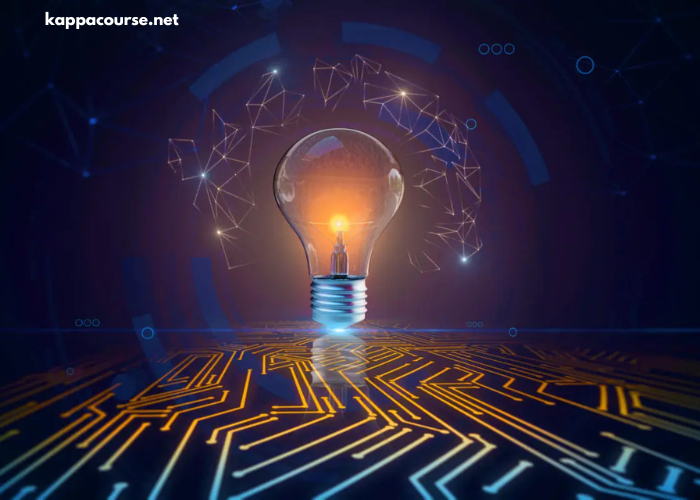In the ever-evolving landscape of technology, the intersection between science and digital innovation is a dynamic frontier where new possibilities are continually being unlocked. This symbiotic relationship between science and technology has given birth to groundbreaking advancements that are reshaping our world in ways we could hardly have imagined just a few decades ago. From healthcare to space exploration, from artificial intelligence to clean energy solutions, the convergence of science and technology is pushing the boundaries of what’s possible and opening up new digital horizons. In this article, we will explore some of the most exciting developments at this intersection and discuss the profound implications they have for our future.
Healthcare and Biotechnology
The marriage of science and technology has revolutionized the field of healthcare and biotechnology. It has led to remarkable breakthroughs in disease diagnosis, treatment, and prevention. One of the most striking examples of this convergence is the use of genomics and big data analytics.
Genomic Medicine: The decoding of the human genome was a monumental scientific achievement. But it’s the synergy between genomics and technology that has made this information practically useful. Today, scientists and clinicians can analyze an individual’s genetic makeup quickly and cost-effectively, allowing for personalized medical treatments tailored to a person’s unique genetic profile. This not only enhances the effectiveness of treatments but also reduces adverse effects.
Telemedicine and Wearable Tech: Another area where science meets technology is in the proliferation of telemedicine and wearable health technology. Smartwatches and fitness trackers can monitor heart rates, sleep patterns, and other vital signs. When combined with advanced algorithms and data analysis, they provide users with valuable insights into their health. Telemedicine platforms enable remote consultations with healthcare professionals, increasing access to medical care and reducing the burden on physical healthcare facilities.
AI-Assisted Diagnostics: Artificial intelligence has made a significant impact on healthcare. Machine learning algorithms can analyze medical images, such as X-rays and MRIs, with remarkable accuracy. AI can assist in the early detection of diseases, significantly improving patient outcomes. Additionally, AI-driven chatbots and virtual assistants are helping with patient interactions, appointment scheduling, and even monitoring chronic conditions.
Space Exploration and Astrophysics
The cosmos has always been a subject of fascination for humanity. The convergence of science and technology has propelled space exploration to unprecedented heights. Here are some of the remarkable advancements in this field:
Robotic Missions: Robotic spacecraft, driven by cutting-edge technology, have allowed us to explore distant planets, moons, and asteroids. These missions have expanded our understanding of our solar system and the broader universe. For instance, NASA’s Curiosity rover has been exploring the surface of Mars, sending back invaluable data about the Red Planet’s geology and climate.
Telescopes and Observatories: Advancements in telescope technology have transformed our view of the universe. Space telescopes like the Hubble Space Telescope have captured breathtaking images of distant galaxies, nebulae, and other celestial objects. These images not only inspire awe but also contribute to our understanding of the cosmos.
Interplanetary Communication: Communication technology has played a crucial role in space exploration. It enables us to receive data from distant spacecraft and send commands to them. This two-way communication is vital for mission success. Innovations in data transmission have made it possible to transmit vast amounts of data across vast cosmic distances.
Private Space Exploration: Beyond government-funded missions, private companies like SpaceX and Blue Origin are pushing the boundaries of space exploration. They are developing reusable rockets, which significantly reduce the cost of accessing space. This innovation has the potential to make space more accessible for scientific research and even commercial ventures.
Artificial Intelligence and Robotics
Artificial intelligence (AI) and robotics represent one of the most transformative intersections of science and technology. These fields are evolving rapidly and have the potential to reshape virtually every aspect of our lives:
Autonomous Vehicles: The development of self-driving cars is a prime example of the convergence of science and technology. These vehicles use AI algorithms to perceive their surroundings and make real-time driving decisions. They have the potential to revolutionize transportation by improving safety and efficiency.
Robotic Surgery: In the field of medicine, robotics are being used to assist surgeons in performing complex and delicate procedures with unmatched precision. Surgical robots can make smaller incisions, reduce patient trauma, and shorten recovery times.
AI in Finance: Financial institutions are increasingly relying on AI for risk assessment, fraud detection, and trading. AI algorithms can analyze vast amounts of financial data and make predictions with a level of accuracy that was previously unattainable.
Natural Language Processing (NLP): NLP, a subset of AI, is making human-computer interaction more seamless. Virtual assistants like Siri and Alexa use NLP to understand and respond to voice commands. This technology is also being applied to language translation, making global communication more accessible.
Clean Energy and Environmental Science
The challenges of climate change and environmental degradation require innovative solutions rooted in both science and technology. Here are some ways in which this convergence is driving progress in clean energy and environmental science:
Renewable Energy Sources: Advances in materials science and engineering have led to more efficient solar panels and wind turbines. These technologies harness the power of the sun and wind to generate clean electricity, reducing our dependence on fossil fuels.
Energy Storage: The development of advanced energy storage solutions, such as lithium-ion batteries, is critical for the expansion of renewable energy. These batteries store excess energy when it’s abundant and release it when needed, smoothing out the intermittent nature of renewable sources.
Climate Modeling: Supercomputers and sophisticated modeling software allow scientists to simulate climate patterns and predict future changes. This information is vital for policymakers and governments as they formulate strategies to mitigate the impact of climate change.
Environmental Monitoring: Satellites equipped with remote sensing technology provide invaluable data for monitoring deforestation, air quality, and ocean health. These tools help us track environmental changes on a global scale and take targeted actions to protect the planet.
The Ethical and Societal Implications
As science and technology continue to advance and converge, we must also grapple with ethical and societal implications. Here are some of the key considerations:
Privacy and Data Security: With the proliferation of digital technologies, the collection and use of personal data have become major concerns. Striking a balance between technological progress and individual privacy is a pressing challenge.
Job Disruption: Automation and AI have the potential to disrupt traditional job markets. As machines become more capable of performing tasks previously done by humans, we must consider the impact on employment and seek ways to reskill and adapt the workforce.
Biotechnology Ethics: Advances in biotechnology, including gene editing and cloning, raise ethical questions about the boundaries of scientific experimentation and the potential consequences of playing with the building blocks of life.
Environmental Responsibility: While technology can help address environmental challenges, it can also contribute to environmental degradation. The production and disposal of electronics, for example, generate electronic waste (e-waste) that can harm the environment if not managed responsibly.
Conclusion
The convergence of science and technology is reshaping our world in profound ways. It’s driving advancements in healthcare, space exploration, artificial intelligence, clean energy, and countless other fields. These innovations have the potential to improve our quality of life, expand our understanding of the universe, and address pressing global challenges.
However, as we navigate this digital frontier, we must also confront ethical and societal questions. How do we ensure that these technologies are used



